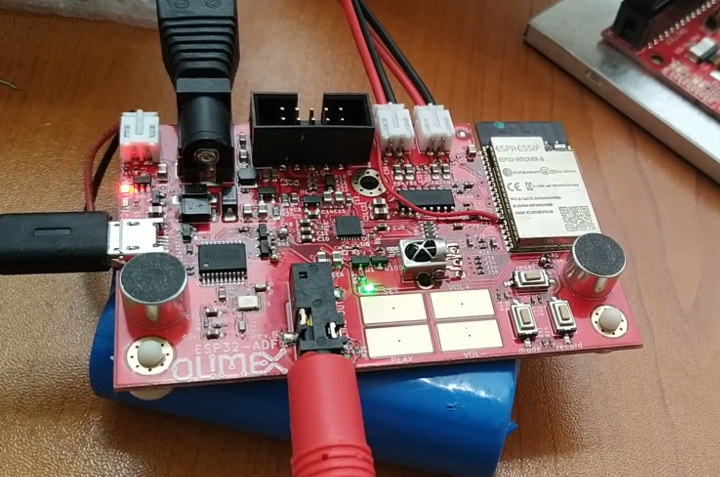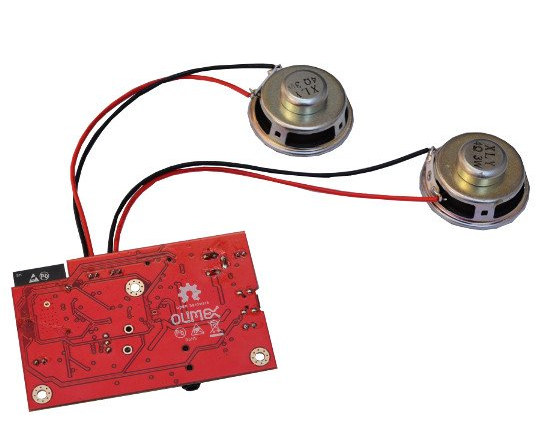We’ve already covered several (smart) audio boards based on ESP32 WiSoC, including the Espressif’s own ESP32-LyraTD-MSC Audio Mic HDK, as well as third party boards such as TTGO TAudio or Seeed Studio ESP32-A1S all compatible with the company’s ESP-ADF (Audio Development Framework) compatible with Baidu DuerOS, Google Assistant and Amazon Alexa.
Olimex ESP32-ADF adds another ESP32 audio option, and AFAIK the first one that is open source hardware, with two speakers, and a dual-microphone that enable projects such as Alexa smart speaker, internet radio receiver, or SiP VoIP phone.

Olimex ESP32-ADF specifications:
- Wireless Module – ESP32-WROVER-B with 8MB PSRAM, 4MB Flash, WiFi 4 and Bluetooth 4.2 LE
- Audio
- Stereo microphones
- Stereo 2x3W speakers with amplifier
- Audio output jack
- Display – UEXT connector for optional 2.8″ LCD display
- USB – 1x micro USB port for power supply and programming
- Misc – IR receiver, 4x touch buttons, 3x tactile buttons
- Build-in programmer
- Power Supply
- 5V/1A via DC jack
- On-board charger and LiPo battery header
- Dimensions – 83x52mm

The KiCad schematics, PCB layout, Gerber files, 3D files, and BoM are released under a CERN OHL v1.2 license on Github, and they also mention a GPL3 license for the software and a CC BY-SA 4.0 license for documentation. Right now, there’s nothing about software, nor documentation, but the code for the SiP VoIP phone and Internet Radio receiver will be committed next week once the company has completed the graphical UI. In the meantime, we can all check out the Amazon Alexa smart speaker demo.
Olimex ESP32-ADF board can be purchase now for 21.95 Euros with the two speakers, while the 2.8″ LCD display with 320×240 resolution and resistive touch panel is available for 15 Euros.

Jean-Luc started CNX Software in 2010 as a part-time endeavor, before quitting his job as a software engineering manager, and starting to write daily news, and reviews full time later in 2011.
Support CNX Software! Donate via cryptocurrencies, become a Patron on Patreon, or purchase goods on Amazon or Aliexpress




